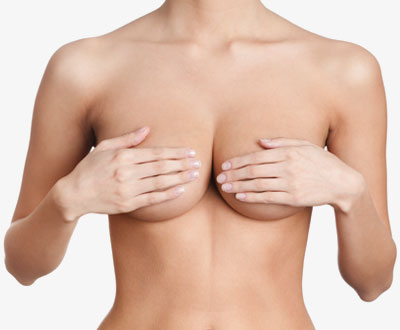Tuberous breasts
From tubular-shaped breasts to naturally-shaped breasts



Tuberous or tubular breasts are a congenital malformation that affects one or both breasts in teenage women, causing major psychological trauma. People with such breasts feel very strange: their breasts affect them in their personal relationships and they avoid showing them.
While the specific cause of this anomaly is not known, we do know that it is an alteration in the development of the breast characterised by the lack of development in the base, the sides and the lower pole of the breast, with the breast only growing outwards, leaving a tubular breast with a very large and outstanding areola as a result. Sometimes the areola falls in front of the breast, and the breasts are often asymmetrical.
With surgery one can correct all defects associated with tubular breast to achieve a normal and natural-looking breast. We change the shape and volume of the breast and the size of the areola in a single procedure.
The surgery is performed with local anaesthesia and sedation. Firstly, it consists of expanding the existing gland through radial incisions, opening the existing gland up as much as possible. The second step is to insert a prosthesis that is wide enough to give the breast a normal and proportionate appearance, both on the sides and at the bottom. The final step is to reduce the size of the areola and put it in its place.

Most of the time a prosthesis is required, since the gland is insufficient to give the full shape to the breast. In other cases, in addition to the prosthesis, the patient´s fat is required to improve or perfect the limits where the prosthesis ends. Fat is also necessary when there is significant asymmetry between one breast and the other and, through lipofilling, we can achieve greater symmetry between the breasts.
This type of procedure is performed with local anaesthesia and sedation. The patient must wear a bandage that will be removed after 1 week, and they will be able to resume their day-to-day activities.
The post-operative period is not painful and recovery is fast and pleasant.
From the day you remove the bandage you can see the outcome, which is excellent.
It is a surgical procedure that improves the patients´ self-esteem. In addition to the aesthetic benefit, it has a great psychological benefit that allows the patients to reintegrate quickly into their personal and social lives.
Click on the buttons to see the before-and-after comparison.
Tubular breasts are so called because they have a tubular shape. It is conditioned by alteration in breast development, such as underdevelopment of mammary tissue with insufficient lower pole and herniation of the areola with excessive diameter. The alterations can be of different grades, and the abnormality in one side can be much bigger than in the other.
In reality, tuberous breasts bear a close resemblance to hypotrophic breasts and many women attend the consultation believing that they only require a breast augmentation. However, a consultation with expert plastic surgeons is essential so that they can correctly diagnose insufficient development in the lower section and can classify it as a tuberous breast. In general, patients who present with tuberous breasts consider their breasts, which tend to be asymmetrical, to be very strange and do not have the normal shape of hypotrophic breasts.
Of course, they require surgical intervention and must be studied very precisely to determine which part of the breast should be augmented, which in particular tend to be the whole periphery and the lower section. This augmentation is performed via the insertion of prostheses. The areola must also be reduced and the protruding part of the gland must be repositioned. In some cases, we use fat graft prostheses to correct different scars that can be left by the previous submammary furrow.
We consider that the most correct approach is the periareolar approach, since in most cases, the areola has to be acted upon, whether to reduce it, or avoid the herniation of the gland. Therefore, the part of the areola can be corrected and the breast prosthesis inserted to fill the lower part of the breast.
Sometimes it is possible to remodel the gland, if it has enough volume, and correct both the herniation of the areola and redistribution of the gland without placing prostheses by dividing the existing gland into radiuses. But in most cases there is a need of breast implant, In order to give more volume to the lower part of the breast where it is essential.
© 2020 Instituto Perez de la Romana – Legal notice – Cookies policy
Llámenos al 965 206 059 o rellene el formulario para ponerse en contacto con nosotros:
Información adicional: Puede consultar la información adicional y detallada sobre Política de Privacidad de nuestra web.
